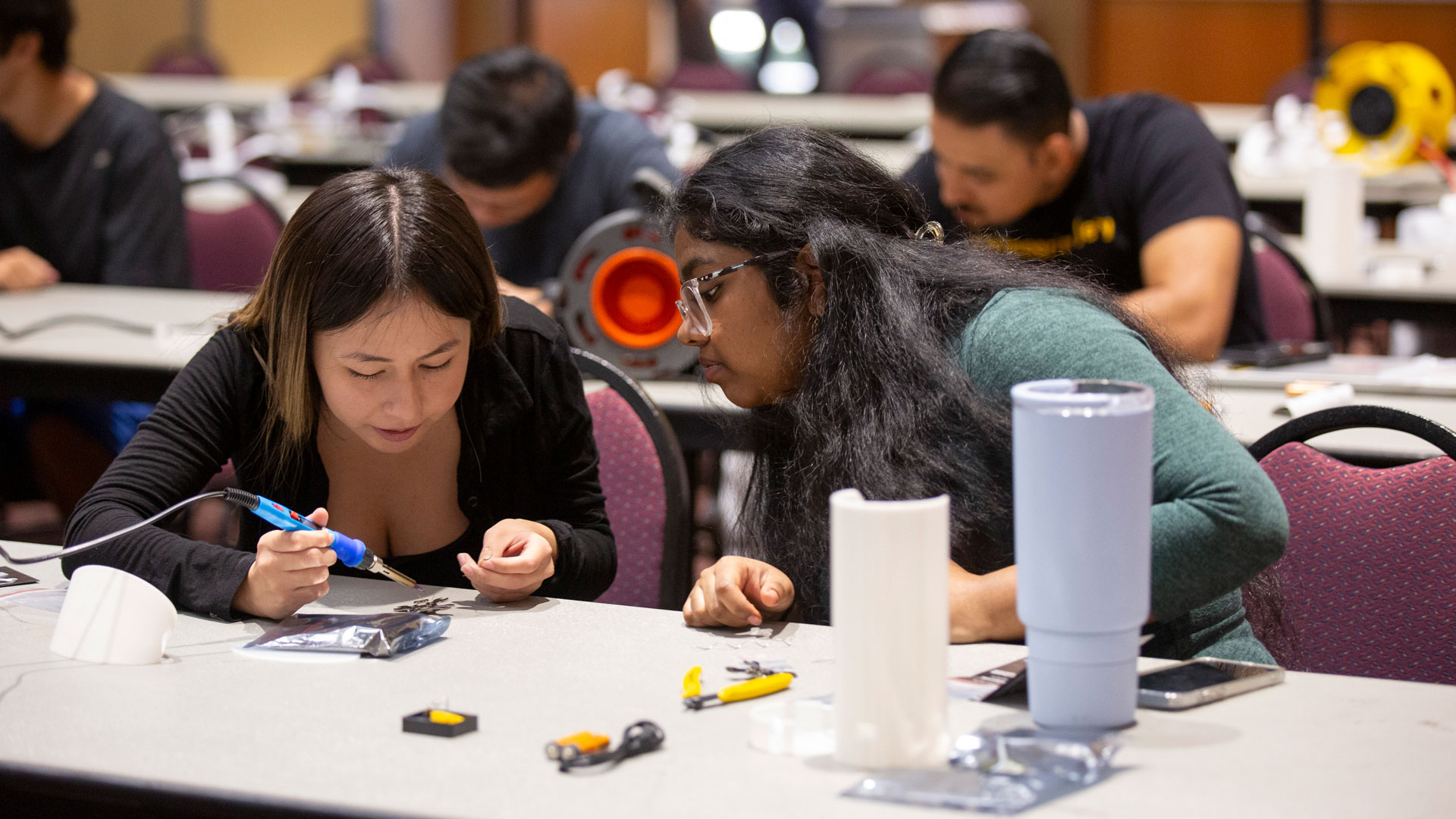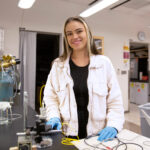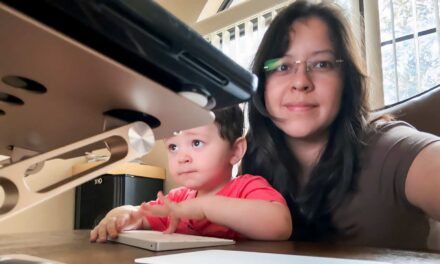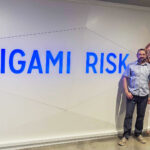
Microtechnology advances promising career possibilities
Industry leaders give ASU students a look at the emerging wave of innovative electronics engineering technologies

Microelectronics is among the most robust of modern high-tech fields that are becoming integral to progress in many major industries. Its expanding capabilities are enabling advances that promise to also significantly boost demand for skills in a range of engineering, science and related technological disciplines.
It’s why the School of Integrated Engineering, the newest of the Ira A. Fulton Schools of Engineering at Arizona State University, is equipping itself to prepare students for success in a business in which innovation is the lifeblood.
Those were among key messages trumpeted at the recent Microchip and Supplyframe DesignLab Workshop: Introduction to Electronics Design led by ASU’s Center for Broadening Participation in Science, Technology, Engineering and Mathematics that brought leaders and experts at the two companies to ASU’s West Valley campus, where the new school is based, to give students the big picture of the potential for rewarding engineering careers in micro technologies.
More than 30 students heard from professionals in multiple areas of the various operations of the Microchip Technology company headquartered in Chandler, Arizona. The company has about 25,000 employees across its various operations and more than 100,000 customers in the automotive, aerospace, defense, communications and computing industries and consumer service market.
“The idea for this workshop was for the leaders of these companies to expose students to different STEM career pathways and to support the school’s efforts to help communicate that message,” says Shawn Jordan, interim director of the School of Integrated Engineering.

Microchip Technologies President and CEO Ganesh Moorthy counseled students on how to navigate their way into the microelectronics industry and effectively set the stage for a successful career in the field. Photographer: Erika Gronek/ASU
Career-building relationships
Leaders at Microchip and Supplyframe DesignLab, which provides its Design-to-Source Intelligence to help companies improve productivity and market resilience, presented the September 6 workshop, “Introduction to Electronics Design,” at the West Valley campus.
Speakers from the companies talked to students about opportunities, challenges, issues, expectations and aspirations that those entering the microelectronics field are likely to experience or encounter.
The event was funded in part by a grant from the National Science Foundation and Accelerate Latinx Representation in STEM Education, or ALRISE, Alliance, which focuses on promoting diversity, particularly involving Latinx students, and ensuring higher education institutions are broadening participation in science, technology, engineering and mathematics.
“Microchip wants to build and diversify its future workforce,” says Jennifer Gaetano, the company’s senior manager of integrated global corporate marketing.
“We realize that there’s an opportunity to tap into and build relationships with engineers, and one of our goals is to reach out to the university’s academic program to build those relationships,” she says.
Gabriel Noga, the ALRISE Alliance program coordinator at Phoenix College, says the event was a good first step toward realizing the broad and ambitious goals that set the stage for the ASU workshop.
“I think there will soon be collaborations among the workshop participants to figure out how we can build sustainable partnerships and work together for the benefit of students,” Noga says.

Students at the workshop learned not only about the strictly technical advances being enabled by progress in microelectronics design but also about the more artistic and whimsical creations the technology can help to produce. Photographer: Erika Gronek/ASU
Paving paths into trail-blazing industries
The workshop featured an active participation presentation with the students. Giovanni Salinas, Supplyframes senior product development engineer, guided students through hands-on instructional exercises to give them an understanding of the components, techniques and production processes that go into designing, building and manufacturing microelectronics components and systems.
Majenta Strongheart, director of the Suppyframe DesignLab, teamed with Salinas to develop the curriculum for the sessions, which have been part of workshops the company has led at events across the U.S. and in other countries.
“At the end of the session I heard one student who participated say ‘This is why I got into engineering.’ We are excited about being able to do something like this,” Strongheart says. “It’s part of our overall mission to guide students in navigating their way into the industry.”
Yarenci Soto Martinez, a first-year studying to earn a degree in engineering science with a focus on business in the School of Integrated Engineering, says that‘s the reason she attended the workshop.
A curriculum that blends learning both the engineering and business aspects of various industries are especially valuable, Martinez says.
She is also finding a closeknit community within the school and ASU’s West Valley campus. Martinez plans to attend the school’s future events offering more opportunities to make industry connections.
“I really enjoyed the hands-on part of this workshop,” Martinez says, adding that she hopes to find internships that provide the similar experiences.
Kevin Shepard, a undergraduate student majoring in engineering science with a focus on microelectronics, says he gained further understanding of the field from the glimpse the workshop provided into the multidimensional array of high-tech expertise that will be integral to field’s evolution.
“Not all of Microchip’s employees studied microelectronics,” Shepard says, noting that students in the Fulton Schools’ electrical and mechanical engineering and computer science programs are undertaking efforts that could also position them for employment in the industry.

School of Integrated Engineering Interim Director Shawn Jordan (center) converses at the workshop with Foundation Professor Vernon Morris (at left) and David Paloian, the academic program manager at Microchip. Jordan and his colleagues are organizing another introductory microelectronics workshop for students in October. Photographer: Erika Gronek/ASU
Insights into the inner workings of business
The workshop also featured Microchip Technology President and CEO Ganesh Moorthy, who led a session with other company leaders on giving students guidance for piloting their course into and through the microelectronics industry’s corporate and technical environments.
Moorthy, a member of the Semiconductor Industry Association Board of Directors, told students they need more than advanced education in STEM subjects. He advised them to also learn skills in communications and relationship-building and gain an understanding of the business and corporate priorities shaping management goals in high-tech industries.
The workshop offered students valuable hands-on lessons that will help prepare them for further education to pursue roles in the semiconductor field and the broader microelectronics industry, he says.
“The technical learning the students experienced, in addition to the collaborative skills they learned by working as a team, are essential to what they will need to know as they embark on their professional journeys,” Moorthy says. “Microchip is happy to have supported this workshop and invest in innovation and technology for future engineers.”
School Director Jordan says he is talking with various industry corporate leaders to explore more collaborations with the school’s faculty members and students.
Already scheduled is an Oct. 4 Introduction to Electronics Design Microchip Workshop Event with Microchip Technology and Supplyframe DesignLab teams in the Tooker House Classrooms on the ASU’s Tempe campus.



































